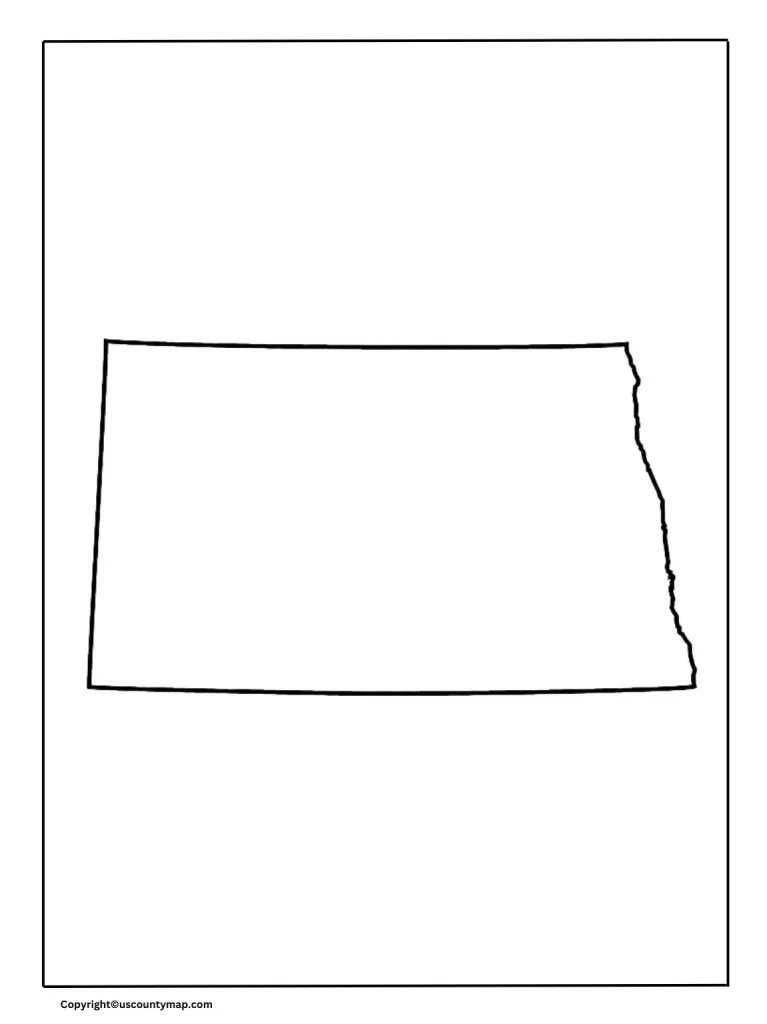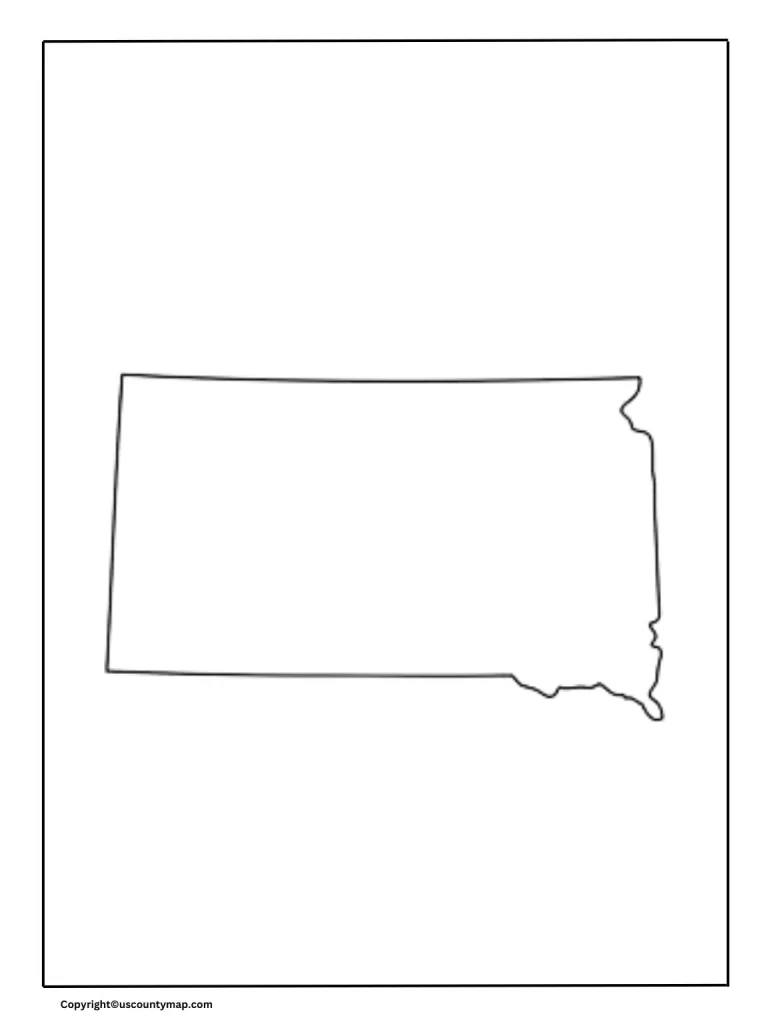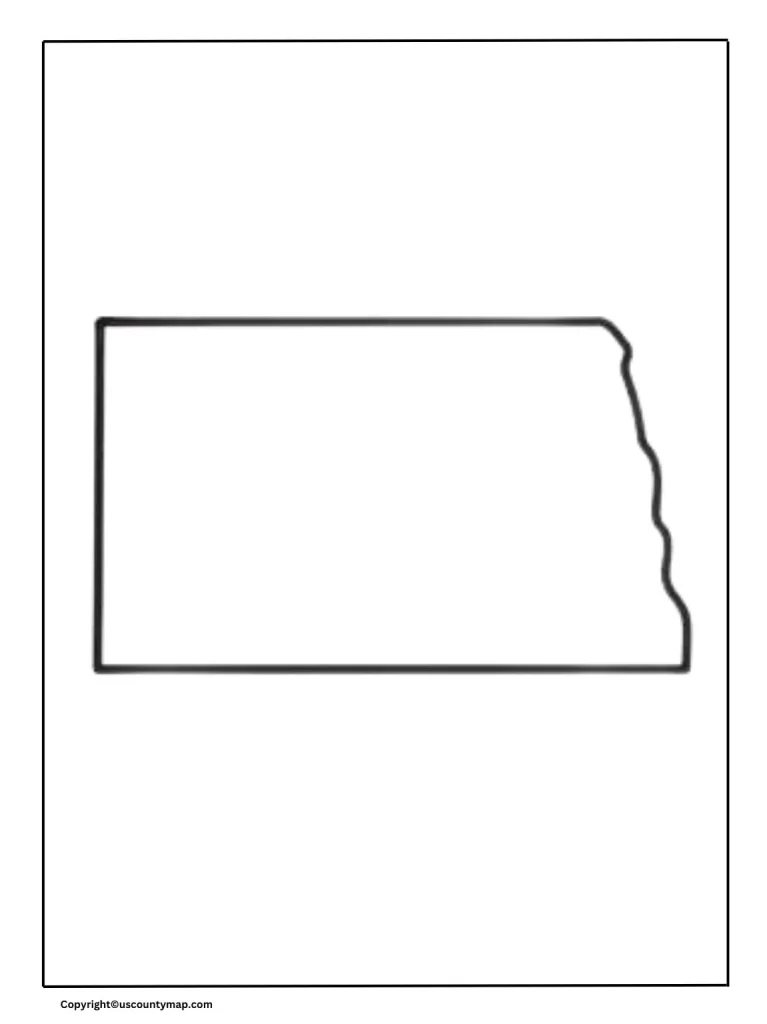A blank map of North Dakota affords a broad application. In education, the blank map allows students and teachers an opportunity to label several aspects of the state, including its major cities, rivers, and physical features, to practice and reinforce their knowledge of its geography. It is also used for planning and analysis by professionals and planners when they wish to visualize and strategize about land use, infrastructure development, and other projects without any clutter of pre-described data.

It also allows travelers and outdoor buffs to indicate their routes and destinations, thereby promising effective navigation when in foreign areas. It helps prepare customized maps for presentations, reports, or data visualization where users want to overlay some specific information or trends. Thus, the blank map of North Dakota is a learning, planning, and a communication tool that provides a clear and generic formal structure to project-specific needs related to geography and strategy.
Blank Map of North Dakota
In many contexts, blank North Dakota maps serve an array of function:
- Teaching Aid: It is an important educational resource for teaching and studying geography. Students use blank maps to label states, capitals, major cities, and physical features, thereby cementing their understanding of geographical locations and inter-relationships in space.
- Geographical Plan: For individuals and organizations involved in planning and development, a vacant map allows them to imagine and formulate land use, infrastructure projects and resource management without pre-existing data distraction.
- Custom Mapping: It provides a foundation for creating customized maps that include specific information or data, such as regional figures, business spaces, or environmental characteristics, which can be overladed on the vacant map.
- Travel and navigation: Passengers and external enthusiasts use blank maps for chart routes, mark destinations and plan trips, especially in areas where detailed maps are not easily available.
- Visual aid for presentations: It is used in presentations and reports to portray regional data, trends or proposals. By exposing or encountering specific areas, the presenter can effectively communicate to their points to the audience.
- Historical and Cultural Research: Help trace boundaries and changes in a region, thereby aiding cultural and historical studies by having a base for inputting historical information and changes.
The empty map of North Dakota is a versatile and required tool for education, plan, adaptation, travel and presentation purposes.
Printable North Dakota Map
North Dakota is positioned in the northern primary part of the US and is thought for its wonderful geographic functions. Here’s a detailed description of North Dakota as represented on a map:
- Location:
- North Dakota is bordered by using Canada to the north, Minnesota to the east, South Dakota to the south, and Montana to the west.
- It is a part of the Great Plains place and is located inside the North Central U.S.
- Shape and Size:
- The state is rectangular in shape with a somewhat irregular eastern boundary.
- It is about 70,700 square miles in area, the 19th largest state in the country.
- Major Cities:
- Bismarck: The capital city, near the center of the state.
- Fargo: The largest city, in the southeastern corner of the state close to the Minnesota border.
- Grand Forks: In the northeastern corner of the state along the Red River.
- Minot: Situated in north-central North Dakota.
- Major Rivers:
- Missouri River: From south to north, it bisects the west half of the state.
- Red River: Marking the state’s eastern border with Minnesota, flowing north towards Canada.
- Physical Features:
- The Great Plains: Flat to rolling plains dominate much of North Dakota.
- Badlands: In southwestern North Dakota, distinguished by hard, irregular topography and rock formations.
- Rivers and Lakes: Many rivers and lakes, such as Lake Sakakawea and Lake Oahe, which are important for recreation and water supplies.
- Climate:
- North Dakota has a continental climate with cold winters and warm summers. The state’s western region is typically drier than the eastern region.
- Landmarks:
- Theodore Roosevelt National Park: In the Badlands area, it is named for the 26th President of the United States and boasts dramatic scenery and wildlife.
- Theodore Roosevelt National Park: In the Badlands area, it is named for the 26th President of the United States and boasts dramatic scenery and wildlife.
- Regional Divisions:
- The Red River Valley: A productive farming area in the east.
- The Prairie Region: Controls the central and eastern sections of the state, with its expansive farm fields.
- The Badlands: In the west, characterized by its dramatic geologic formations.
North Dakota Map Worksheet with Outline Map
A particular map of North Dakota would highlight those functions, such as key towns, rivers, bodily landscapes, and predominant highways connecting different country areas.



